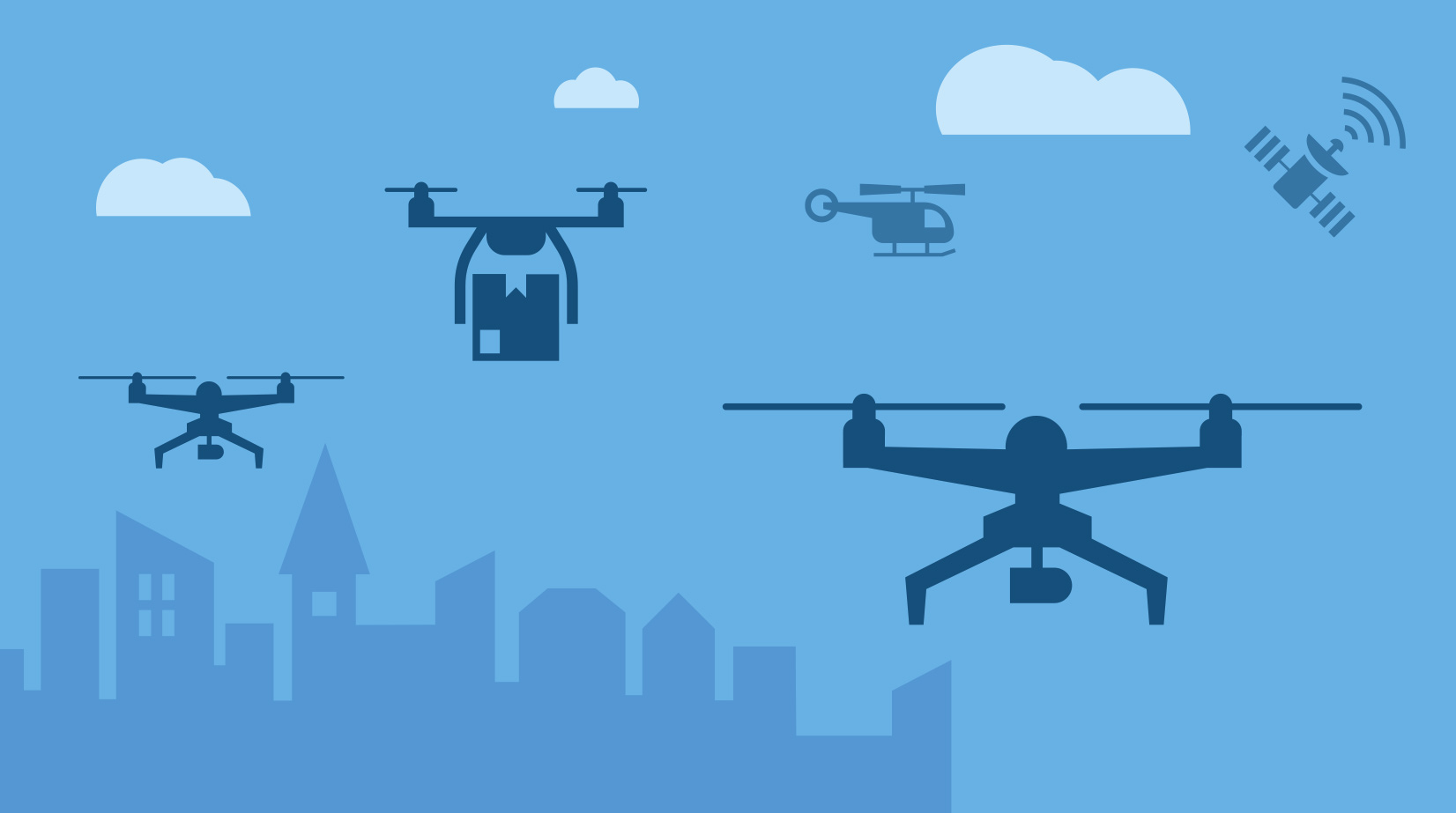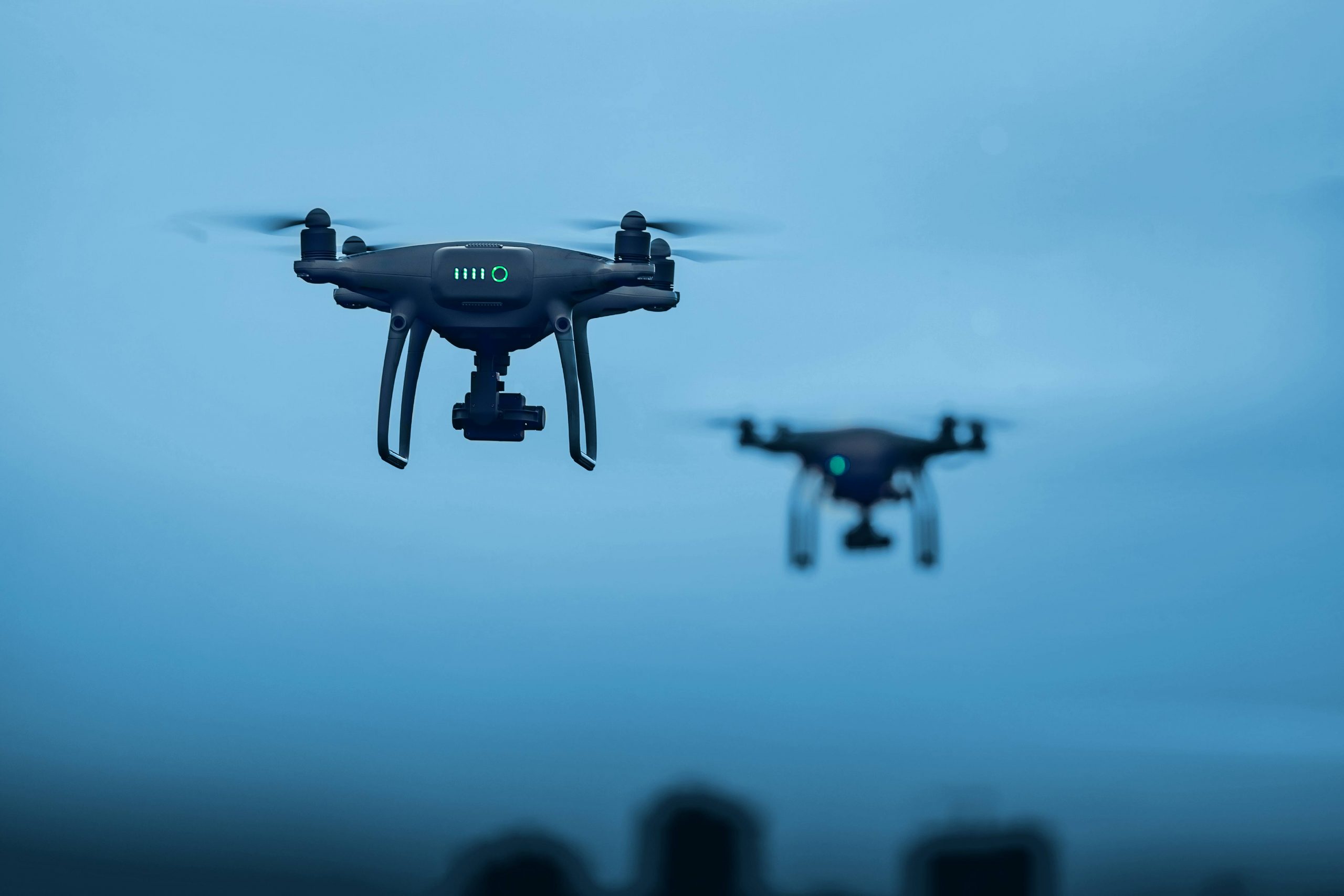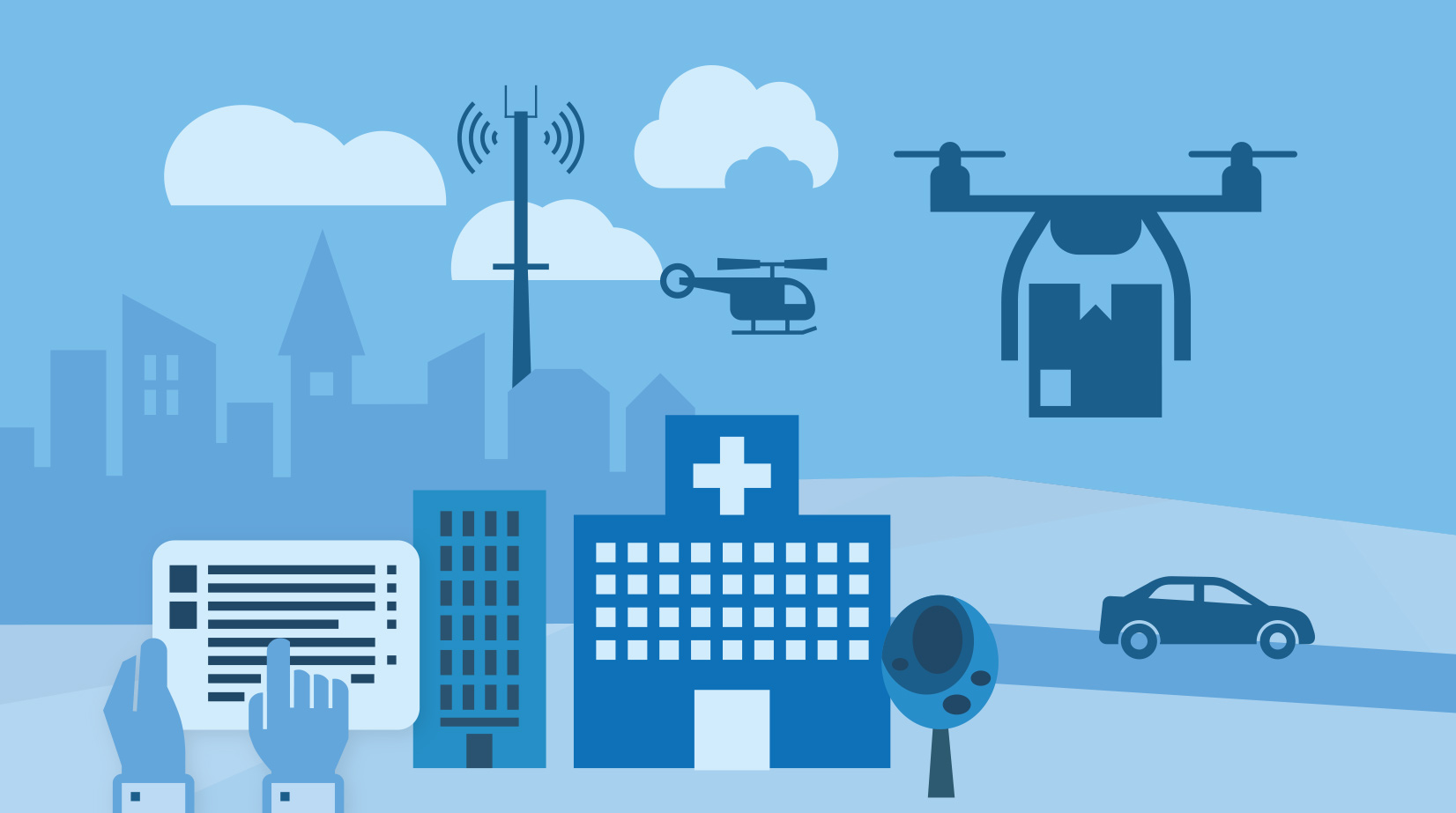Last month, we already addressed the challenges of drone missions in the use case of deliveries. Shortly after the publication of our article, the Federal Aviation Administration (FAA) approved drone deliveries for Alphabet-subsidiary Wing Aviation.
Integration of UAVs into the Smart City
Wing Aviation is also working on the first deliveries by drone in Europe, more specifically in Helsinki. While some customers are already looking forward to no longer having to wait in vain for a transporter from a logistics company, there are voices in Germany that doubt that drones will prevail in urban areas.
We believe that drones are an effective tool and will boost industry and the economy in many ways, but let’s not kid ourselves: In urban space, drones can at best support logistics companies. They cannot completely replace existing delivery systems.
One reason for this is the steady growth in the e-commerce sector. If logistics companies now try to avoid traffic jams on the roads and deliver all parcels by drone, the result will be that it would soon be much louder in cities.
Noise leads to stress and rejection of drones
On Youtube, you can find some comparisons between the operating noises of different drones. As you can see, or rather hear, the drones are still audible even from bigger distances. The volume at i.e. 50 meters is negligible since the basic volume in an urban environment is higher than in a quiet field. Some will say that you can hear cars and delivery vans from this distance, but the crucial difference is the frequency of the sounds. The small rotors must rotate at a high speed to produce enough lift. The more weight the drones must carry, the faster the rotors must rotate so that heavy packages cannot realistically be delivered by them. The payload of today’s drones is usually not enough for this. Not only the weight but also the size and form of a package will be limited with drones. Posters and large picture frames, for example, can´t be delivered by drone. From a technical point of view, one could of course simply enlarge the rotors, which would lower the frequency. In addition, larger rotors could rotate more slowly, which would reduce the overall volume. However, this increases the weight and size of a drone. Large, exposed rotors can also pose a life-threatening hazard to people in case of a collision. Unfortunately, this danger is underestimated far too often.
The noise emissions from drones could become a major problem once they are implemented in urban environments. As long as other noise sources, such as combustion engines or construction sites, do not become quieter, the use of drones in urban areas will only lead to an even higher noise level, which will generate more stress. In addition, the high frequency of small rotors is particularly unpleasant and annoying for the human ear.
Trend reversal before the large-scale introduction of drones necessary
However, the technical evolution of industry 4.0 is intended to boost your economy and make life easier. Drones manufacturers, therefore, need to reduce the volume of drones.
Industry leader DJI is aware of this problem and has already developed quieter rotors for the Mavic Pro. We would like all manufacturers to join DJI in thinking about volume emissions and make their drones as quiet as possible.
We are aware that integrating drones into the urban environment will not be an easy task. In addition to the laws and requirements of the environment and the airspace used, there are many things that need to be considered. Noise reduction is certainly not an easy task for manufacturers, but the noise generated by current drones is a significant factor in their general acceptance by the population.
Drones are a can, not a must
Just because it’s technically possible to use drones for smaller parcel shipments doesn’t mean you have to see thousands of drones in every city transporting Internet orders with loud humming noises. When it comes to integration of drone deployment, it is much more important to check whether it’s necessary to use them. Therefore, we rather believe that medical transports by drones will become a reality. The time saved using a drone for a medical delivery can increase the health of patients or even save lives if used for organ transportation.
Other applications, such as surveying new construction sites or inspecting power plants, can also be implemented without exposing the population to higher noise levels. The use in the documentation of construction site progresses is also acceptable, as there is usually a high noise level anyway.
But what about air taxis?
These have considerably larger rotors, which means that the operating noises are in a lower frequency range than with smaller drones. The operation would, therefore, be much more bearable than if many small drones were buzzing around. However, the rotors of an air taxi must rotate correspondingly fast due to the significantly higher weight.
This will have another effect, the so-called downwash. This is the name given to the gust of wind generated by the rotors below the aircraft so that it can fly in the air. The larger the rotors are and the faster they rotate the more wind is generated downwards. Anyone who has ever stood under a landing helicopter knows that these winds are quite strong. During some flight tests of air taxis, one could recognize that these also generate a lot of downwash. As tempting and forward-looking as the manufacturers of air taxis advertise their devices, doubts remain about their integration into the airspace as well as into the urban environment of metropolitan regions.
In addition to a functional UTM, it would also have to be clarified at what altitude these aircraft would have to fly without affecting the population with their downwash and, more importantly, where these aircraft would be allowed to land. After all, stirred up sand or even stones should not injure anyone.
Fauna
The rules and precautions in the urban environment do not apply in the same way to more rural regions. Population density is lower, and the use of drones is easier. On the other hand, drones unfortunately also affect the animal world and care must be taken to ensure that air traffic from drones in less densely populated areas does not upset the fauna.
Outlook
We at FlyNex want to ensure that drones are used consciously and efficiently. Our contribution is our software HORIZON and MAP2FLY. By using our software, it is possible to plan flights in such a way that the flight plan can be validated, and a flight route can be authorized by the legislator. In addition, we offer the possibility to integrate drone missions into existing work processes on the software side. This allows us to better document their deployment and the image data collected by the drone can be forwarded directly via our solution to the responsible employees for evaluation.
The hurdles that must be overcome to successfully integrate drones into the mobility of the future are extensive, but not insurmountable. As long as drones are deployed with caution and their usefulness is checked beforehand, we believe that the benefits will outweigh the disadvantages. The acceptance by the population and their unrestricted safety are very important factors in the integration of drones into everyday life. This acceptance only works if drones do not cause deafening noise. UAV manufacturers should, therefore, do their utmost to keep the operating noise of their unmanned aerial vehicles as low as possible.
The FlyNex Team





